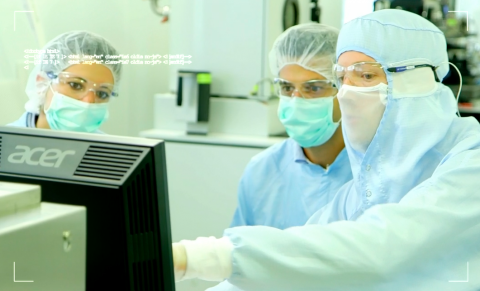Contact person: Andrea Catinaccio
Micro-technologies are being investigated within the Engineering Office. This effort aims at
- developing novel types of detectors,
- implementing alternative approaches to on-detector services, and
- providing microengineered solutions.

microScint - Recently, a new type of scintillation detector based on microfluidics has been demonstrated. It is being considered as potential candidate for particle tracking and beam monitoring devices in High Energy Physics and medical applications.
microCool - A similar microfluidic approach has been adopted to develop ultra-thin silicon on-detector active cooling systems. Such systems have been selected for the thermal management of the NA62 GigaTracKer pixel detectors and for the 2018 major upgrade of the LHCb VeLo vertex detector. They are also studied for the most inner layers of the ALICE ITS upgrade.
microHeII - A third application aims at studying the heat transfer of superfluid Helium II in a network of microchannels embedded in a glass substrate in view of an improved insulation for the LHC supraconducting magnets.
